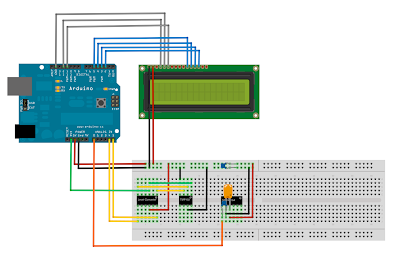In a previous post I gave a few examples showing how simple text overlays can be added to any video stream in GStreamer. Now it’s time to look at compositing between two or more video streams, also called picture in picture. As you’ll see it is still very easy to achieve even when using nothing more than the gst-launch command line tool. First we look at some basic examples, then we finish with a more complex “Live from Pluto” video wall.
Month: June 2010
Simple time-lapse video with gtreamer and ffmpeg
I have experienced an unexpected spin-off while fooling around with GStreamer and my Logitech QuickCam Vision Pro 9000 webcam: A simple and easy way to autonomously capture and render time-lapse videos.
One of the advantages of webcams compared to other digital still and video cameras is that it can be controlled from a computer and the captured frames are transfered from the camera to the computer in real-time using the USB interface. This is pretty much the definition of a webcam and this feature is indeed very convenient for capturing time-lapse videos. Unfortunately, the image quality of webcams has not been anywhere near good enough to make nice looking time-lapse videos but this has changed over the last few years and is continuously improving. The results presented in this article are captured using my Logitech QuickCam Vision Pro 9000 – one of the greatest UVC cameras out there.
A Weekend with GStreamer
![]() This weekend was dedicated to learning and experimenting with Gstreamer – an open source library and framework for constructing audio and video processing pipelines. Despite the weekend being spoiled by lots of bad luck (power outages, Internet down, etc.) I managed to beat the hell out of Murphy and get some work done!
This weekend was dedicated to learning and experimenting with Gstreamer – an open source library and framework for constructing audio and video processing pipelines. Despite the weekend being spoiled by lots of bad luck (power outages, Internet down, etc.) I managed to beat the hell out of Murphy and get some work done!
My hidden agenda is of course finding a good audio/video library to accompany a software defined radio created using GNU Radio and the Universal Software Radio Peripheral (USRP), and to eventually be able to transmit real time high definition video over the air. While GNU Radio and the USRP can take care of everything related to software radio and RF, I am still looking for a good framework for flexible audio/video processing.
A Weekend with GStreamer
![]() This weekend was dedicated to learning and experimenting with Gstreamer – an open source library and framework for constructing audio and video processing pipelines. Despite the weekend being spoiled by lots of bad luck (power outages, Internet down, etc.) I managed to beat the hell out of Murphy and get some work done!
This weekend was dedicated to learning and experimenting with Gstreamer – an open source library and framework for constructing audio and video processing pipelines. Despite the weekend being spoiled by lots of bad luck (power outages, Internet down, etc.) I managed to beat the hell out of Murphy and get some work done!
My hidden agenda is of course finding a good audio/video library to accompany a software defined radio created using GNU Radio and the Universal Software Radio Peripheral (USRP), and to eventually be able to transmit real time high definition video over the air. While GNU Radio and the USRP can take care of everything related to software radio and RF, I am still looking for a good framework for flexible audio/video processing.
MPX4115A Pressure Sensor with Arduino
Today I have successfully interfaced an MPX4115A pressure sensor to my Arduino board. The MPX4115A is an analog pressure sensor that outputs an analog voltage proportional with the pressure. The setup is the same as the previous one with the TMP102 temperature sensor; I just added the pressure sensor, a few decoupling capacitors and connected it to an analog input of the Arduino board.
TMP102 Temperature Sensor with Arduino
At long last, I have found some time to start playing with Arduino stuff!
I decided that good starter project would be simple weather station that reads temperature, pressure, … sensors and shows them on an LCD display. Below you will see a first cut using a TMP102 temperature sensor from Texas Instruments mounted on a breakout board from Sparkfun.

